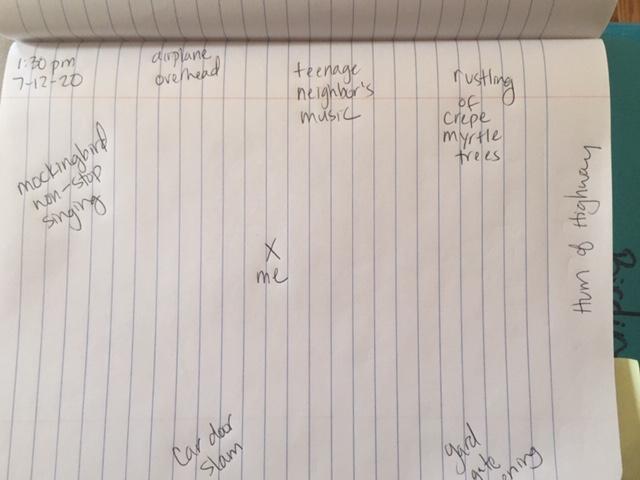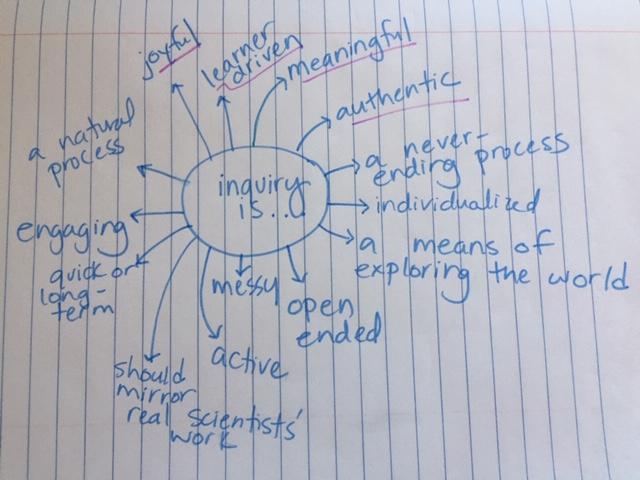Amy
Forum Replies Created
Viewing 18 posts - 1 through 18 (of 18 total)
-
AmyParticipantI've had success using a rubric, similar to the fourth grade one shared here. I also think it's important for students to have many "mentor" examples to look at. They can practice grading these mentor inquiry projects the same way we did in the last lesson.in reply to: Sharing Student Projects #724582
-
AmyParticipantThe biggest challenge I face every year when leading inquiry based activities in school is the lack of time. In public schools, there is so much pressure to "cover material" and get through so many science units (not to mention all the other subjects). I never feel like I do it justice. I don't really have a solution for this problem, but I just continue to struggle with it each year.in reply to: Assessing Investigations – Classroom Case Study #724486
-
AmyParticipantSo sad to hear this. I too have had many of these experiences. It's so heartbreaking for the kids. Yes, don't give up!in reply to: Assessing Investigations – Classroom Case Study #724485
-
AmyParticipantI like to take students outside a lot to do nature journaling. I always struggle to find time to regularly discuss what we found and to encourage questioning like this. I usually am good about it at the beginning of the year, but as the demands roll on throughout the year, I tend to do it less and less. We also have a "specimens table," where students bring in interesting things they've found out in nature-feathers, sticks, rocks, leaves, honeycomb... That's always a favorite place to go and explore, a way of bringing nature into our class. A lot of interesting questions begin at that table. I want to work on being more purposeful in drawing out these types of questions with students this year.in reply to: Launching Investigations #723886
-
AmyParticipant
@laurie Thank you for directing me to that resource. It looks awesome!
in reply to: Intro to Citizen Science #723427 -
AmyParticipantGorgeous! I'm so jealous of your art skills.in reply to: Intro to Citizen Science #723426
-
AmyParticipantI participated in a Painted Lady Butterfly CSP through the Museum of Natural History in Los Angeles. It was pretty easy and straight forward, so I didn't experience too many challenges. They were definitely invested in it because it was a real, scientific study. I've also participated in the Great Christmas Bird count with my students. This was made easier by joining up with an Audubon count at a local nature center. I was nervous about us being able to accurately identify birds and so it was nice doing it with experts. This February I was gearing my class up to try the Backyard Bird Count, but decided to just collect the data for in-class use. I found that students were pretty good at identifying local birds at this point, but they became competitive and made up wild stories about different birds they saw. With younger kids I'm worried about collecting accurate data. Next year, I will spend more time on the importance of accuracy and will create a class account with eBird.in reply to: Symbiosis in the Soil – Classroom Case Study #723001
-
AmyParticipantI agree that taking kids out to experience nature first-hand is a fantastic way to support wondering and questioning. This reminds me very much of some of the professional development I've done around working with primary sources and also VTS (visual thinking strategies). I admit that I do struggle with this in science, however. Since there is pressure to "cover material" and get through several science and social studies units in a year, I think I sometimes don't allow enough time for this kind of open-ended questioning in science. Also, I sometimes struggle with the I Wonder board. It usually fills up pretty quickly and then can become unruly. Some of the questions we come back to or do lead to student investigations, but a lot of times they just stay up there indefinitely. Do people change out their I Wonder boards with each unit? How do you keep them fresh and meaningful for students?in reply to: Supporting Open-ended Questions #722996
-
AmyParticipantI enjoyed doing the sound map. I did it with my six and eleven year old daughters. It caused us to be more mindful of our surroundings. I would like to try this in different settings around town. We'll give it a try when we go to the local park later this morning.
 in reply to: Encouraging Observations #722937
in reply to: Encouraging Observations #722937 -
AmyParticipantI plan on using this whole unit this upcoming year. I started with it this year and then when Covid hit, things went sideways. The thing I'd like to get better at this year is becoming more familiar with some of the Citizen Science platforms so I feel more confident using them in the classroom with students. I think I will start with Celebrate Urban Birds. I really want to have a deeper understanding of eBird so that I can capitalize on all the rich opportunities for data analysis.in reply to: Linking Citizen Science & Inquiry #721708
-
AmyParticipantSmriti, I watched the video you linked. That's really cool. I joined iNaturalist this year and have played around with it a little bit. I want to think more about how I could integrate it into the work I'm doing with elementary aged students. Thanks for sharing.in reply to: Linking Citizen Science & Inquiry #721170
-
AmyParticipantThe three key teacher practices are: position youth as people who do science, frame work globally and locally and attend to the unexpected. Without knowing it, I think I kind of attend to the three practices, but I definitely want to be more intentional about it now. I was really fascinated by the term ESA, or Environmental Science Agency. I had never heard that term before and I'd like to think some more about that. I looked at the citation and want to do some of my own inquiry around ESA now. Great article!in reply to: Citizen Science in Your Classroom #721063
-
AmyParticipantThis year my class participated in a citizen science project with the Natural History Museum of Los Angeles. Every April, the Painted Lady butterflies migrate en masse through the city from the deserts of Arizona and Mexico to the Pacific Coast. Everybody went outside for a designated period of time and counted the number of Painted Ladies they saw flying west and submitted it to the museum. It was a perfect first citizen science project for us. This summer I'm hoping to become more familiar with eBird and set up a class account. I'm planning to start with that next year and then, based on what my students are interested in, guide them toward different projects based on their own personal passions.in reply to: Intro to Citizen Science #721040
-
AmyParticipantLast year I taught fourth grade and was working with the Investigating Evidence unit. We had been studying local birds from day one, and the students were really intrigued with the investigation called Will a Fake Cat Scare Birds? They wanted to replicate it to see if they'd get the same data here in Los Angeles and interestingly enough, we did not. So that led to a whole bunch of wonderings that consumed us for about a week. Most of the birds that came to our feeders were sparrows and so the kids began researching sparrows and trying to figure out different investigations they could do to figure out more about them. Their hypothesis was that sparrows are smarter or more brazen than the birds in the initial experiment. (Unfortunately the student just said "birds," and never identified what types of birds were involved in her investigation, so we couldn't compare.) What started out to be an introductory confirmation inquiry ended up moving into a more open inquiry. It was a great jumping off point for students to begin their own open inquiry as we progressed through the unit, but unfortunately COVID hit and we left it there. Some students did continue with their own open inquiries related to birds from home and I tried to support them the best I could. Luckily I am looping with this class and will have them as fifth graders next year so we'll have plenty of time to finish up and present our investigations!in reply to: Inquiry in Your Classroom #721027
-
AmyParticipantInquiry is a natural process humans go through as they seek the answers to life's questions, both big and small. I think it is our job as educators to tap into this natural process and equip students with the skills necessary to more effectively engage in inquiry for the rest of their lives.
 in reply to: Intro to Inquiry #721009
in reply to: Intro to Inquiry #721009 -
AmyParticipantA great example of authentic place-based inquiry. I've been thinking a lot about insects recently because I just finished reading Nature's Best Hope by Douglas Tallamy. It's all about native plants, but he writes a lot about how people don't know much about insects and as humans, we don't care about or protect the things we don't know about. He goes on to explain how insects are really the glue that hold ecosystems together. It got me thinking a lot about how I might try to incorporate entomology into my own classroom. You've sparked some ideas...in reply to: Inquiry in Your Classroom #720991
-
AmyParticipantAwesome! This seems like authentic inquiry at its best.in reply to: Inquiry in Your Classroom #720986
-
AmyParticipantThis sounds really wonderful. A great way to incorporate the engineering design process!in reply to: Inquiry in Your Classroom #720984
Viewing 18 posts - 1 through 18 (of 18 total)

